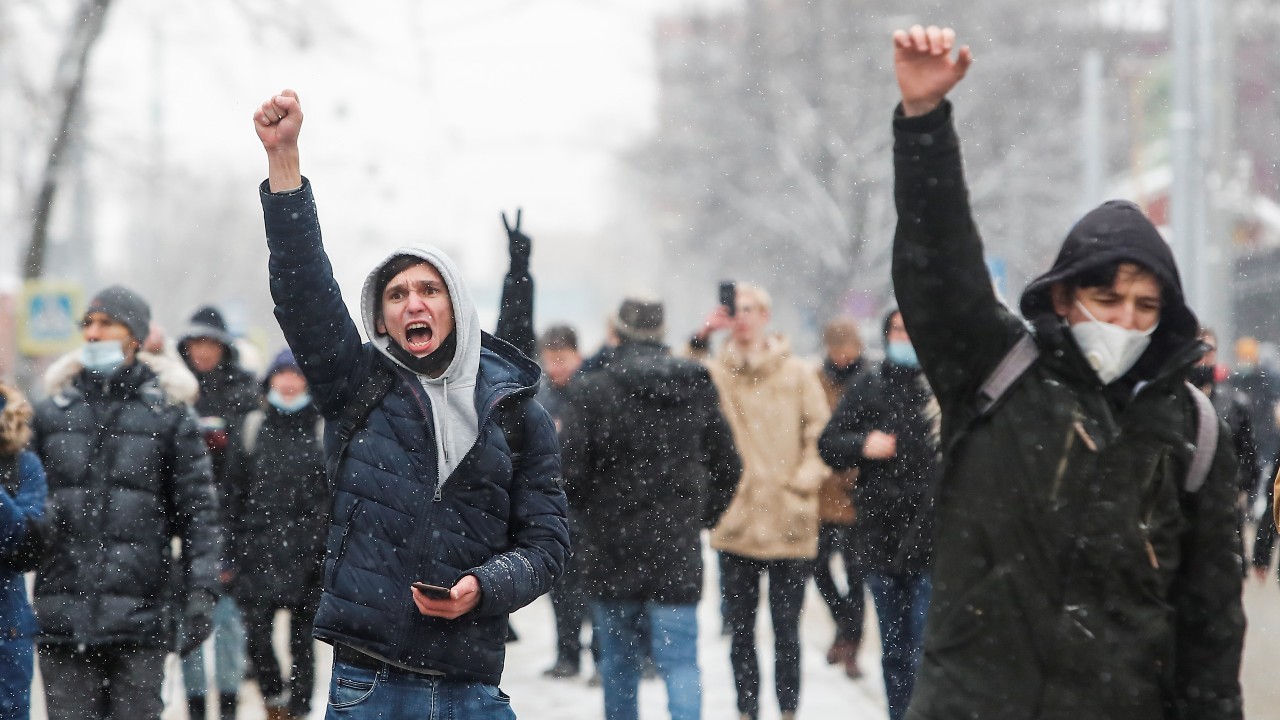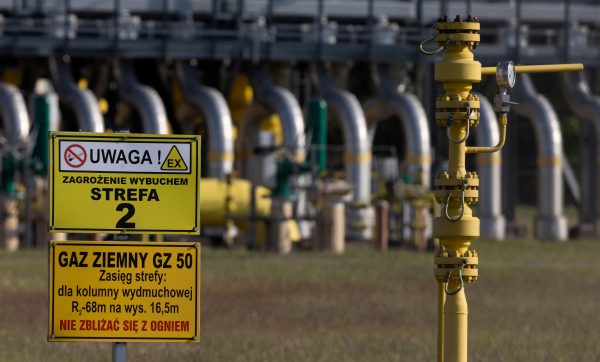After a brief trial, a judge sentenced Russian opposition leader Alexei Navalny to prison for almost three years yesterday. The ruling will likely send the 44-year-old anti-corruption activist to a distant penal colony, where he will be out of Russian President Vladimir Putin’s way, at least for the time being.
The outcome of the trial was predetermined, and not just because the rule of law barely functions in Russia. The Kremlin has wanted Navalny, a vocal critic, gone for some time now. After surviving an attempt on his life late last year and recovering in Germany, Navalny decided to return to Russia in late January. Some criticized the move as an unnecessary political stunt. By returning to Russia, Navalny was almost certainly giving up either his freedom or his life.
But Navalny’s decision to return may have changed Russia’s future irrevocably. At the very least, his decision to put himself in harm’s way has recharged the protest movement in Russia, and has given a new generation a moral touchstone for the way forward.
The scale of the pro-democracy protests in Russia surprised even the Kremlin. Thousands of Russians united on January 23rd in opposition to Navalny’s arrest. At least 3,500 protesters were arrested that day. And the protests continued, with tens of thousands of Russians rallying across the country right up to Navalny’s trial on Tuesday.
The protests even spread to occupied Crimea. Residents in Crimea showed up to protest Putin for the first time since Russia annexed the peninsula from Ukraine in 2014. Young people rushed into Sevastopol’s historic Nakhimov Square, where pro-Russian separatists demonstrated seven years ago. This time, however, they were shouting slogans against corruption. Putin enjoyed a high level of support in Crimea immediately following annexation, explains Novaya Gazeta’s correspondent Nadezhda Isaeva. But now, people are getting tired of the low salaries, the rising costs of living, and the failed response to the coronavirus pandemic.
The state met the protesters with cruelty and brutality. Margarita Yudina, a 54-year-old woman who was kicked in the stomach by a policeman in St. Petersburg, spoke to Novaya Gazeta, saying she plans to file a criminal case against her aggressor. “I didn’t do anything illegal,” Yudina said. “According to our constitution, we have the right to free assembly and the right to express our opinions.”
There has been a sea change for journalists as well. The last time pro-democracy protests got this big, during the Bolotnaya Uprising of 2011-2012, it was risky to participate in street actions but still safe to discuss and cover them. Now, even that has suddenly become dangerous. Journalists from across the country are receiving anonymous threats just for reporting on the rallies.
In both Moscow and St. Petersburg, police manhandled and beat numerous journalists. A policeman hit Novaya Gazeta‘s correspondent Liza Kirpanova over the head with a truncheon. Another broke photojournalist Victoria Odissonova’s camera lens. Novaya Gazeta’s reporter in Crimea was also threatened. Crimean authorities accused her of organizing the protests simply because she had left her contact details in a group chat asking people involved in a demonstration to contact her and tell her how it went. “They accused me of taking Western or Ukrainian money,” Isaeva said.
One of the most popular videos circulating online prior to the pro-Navalny protests was that of a young woman on the social media platform TikTok teaching people how to avoid arrest. The video showed the new face of Russia’s pro-democracy protests: the rising TikTok generation. Russia has the 5th largest number of TikTok users in the world. The popular social media platform has become a refuge for young Russians critical of the government, even as the Kremlin cracks down on other social media platforms.
In his weekly column, Kirill Martynov, the political editor for the Russian newspaper Novaya Gazeta, pointed out that these were the first protests where people took to the streets in both small and large cities and towns at the same time. When people in Moscow are up in arms, people in the regions generally stay at home, and vice versa. But this time, people took to the streets all across Russia, not just in support of Navalny himself, but also to protest the lack of free elections or an independent court system.
Even without the mass protests, however, there was a fundamental political message embedded in Navalny’s decision to return to Russia, argues Martynov. Throughout the years, the Kremlin has taught Russians to think that the only political actor in the country is the Kremlin itself. When the authorities act, everyone else must comply or suffer. Navalny’s actions defy this logic by asserting his agency despite the odds. His return breaks the constraints of the country’s political culture. “As a free person and a citizen of a great country, Navalny demonstrates that he is able to determine his destiny, without suggestions from his superiors and the help of his ‘senior comrades,’” Martynov wrote.
The coming of age of a new generation is critical, too, Martynov notes. “Generations change. Hundreds of thousands of young people have grown up in a country without fundamental rights and freedoms. Their numbers will only grow as today’s TikTok users mature.” And if nothing else, the powerful symbolism of the past few weeks will remain a touchstone for all movements that follow.
Still, though the scope and resiliency of the protests has been notable, Martynov is not very optimistic that they will change the Kremlin’s short-term calculus. “To gain freedom for a politician, it’s likely that we’d need around 60 million people to take to the streets, or the same number of people who read Navalny’s anti-corruption investigations,” he wrote. Russia, it seems, is not there yet.
This story is written by Cristina Maza and is based on reporting by Nadezhda Isaeva and Kirill Martynov. Russia, Explained is a weekly newsletter by Russian independent newspaper Novaya Gazeta. Read the latest edition to learn more. Courtesy of the Russian Language News Exchange.




